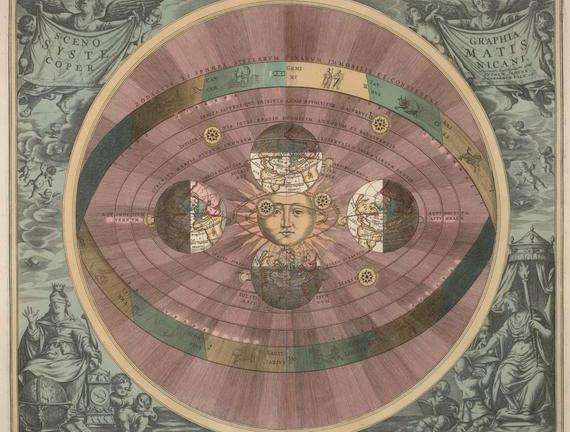 "School of Athens", 1509
"School of Athens", 1509
 Francis Bacon, father of empiricism
Francis Bacon, father of empiricism
 Heliocentric theory of the universe
Heliocentric theory of the universe
The Scientific Revolution was a movement towards rational thinking and scientific
analysis rather than blind devotion to religion. During this time theories were
developed that challenged both the Catholic Church and common thought of the time.
The scientific method provided a logical, repeatable way to collect data on
observable phenomenons in nature.
Prelude
The Renaissance promoted "studia humanitatis," which was the study of history,
philosophy, grammar, etc. in order to improve one's self. This led people to
attempt to understand the world around them through a more rational point of
view, rather than through the lense of religion. This would lead to the
Scientific Revolution.
Francis Bacon & Empiricism
One of the most important developments to the Scientific Revolution was Francis
Bacon's empirical method. A new way of testing scientific theories, empiricism
sparked the Scientific Revolution. The ability to logically test and eliminate
hypotheses allowed budding scientists to have a solid basis for their assertions.
Copernicus & Heliocentrism
One of the most famous examples of the Scientific Revolution challenging the church
was Copernicus's heliocentric theory. For centuries, the Catholic Church had said
that the universe centered around Earth. However, Copernicus used empirical data
to prove that the universe actually orbited around the sun. This challenge of the
church's authority shocked the world and laid the foundation for other scientists
to do the same in the future.
 "School of Athens", 1509
"School of Athens", 1509
 Francis Bacon, father of empiricism
Francis Bacon, father of empiricism
 Heliocentric theory of the universe
Heliocentric theory of the universe